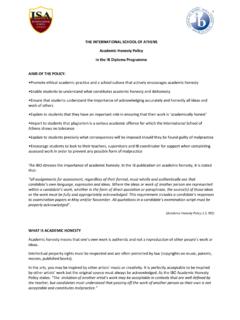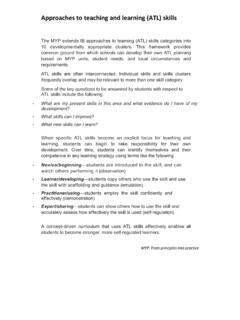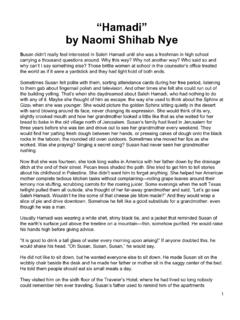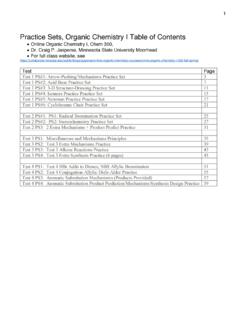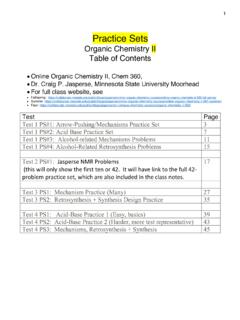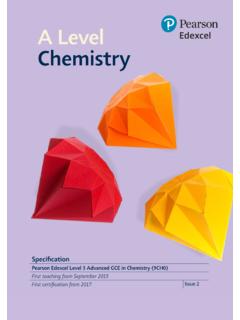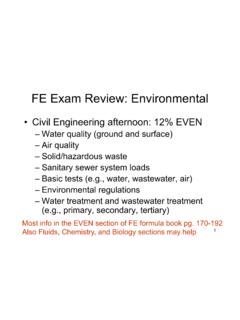Transcription of MYP Key Concepts - International School of Athens
1 MYP Key Concepts The MYP identifies 16 key Concepts to be explored across the curriculum. These key Concepts , shown in the table below represent understandings that reach beyond the eighth MYP subject groups from which they are drawn. Aesthetics Change Communication Communities Connections Creativity Culture Development Form Global interactions Identity Logic Perspective Relationships Time, place and space Systems Teachers use key Concepts from their own subject group(s) as well as key Concepts from other subject groups to plan disciplinary and interdisciplinary units of inquiry.
2 Teachers identify one key concept that drives the unit s development. These Concepts are not only key in the sense of being important; they also provide a key a way into a body of knowledge through structured and sustained inquiry. They place no limits on breadth of knowledge or on depth of understanding, and therefore provide access to every student, regardless of individual aptitudes and abilities. Inquiry into MYP key Concepts will further develop (and lead to debate on) the meaning of these significant ideas.
3 The following are definitions for the 16 key Concepts used for inquiry in the MYP. Aesthetics deals with the characteristics, creation, meaning and perception of beauty and taste. The study of aesthetics develops skills for the critical appreciation and analysis of art, culture and nature. Change is a conversion, transformation or movement from one form, state or value to another. Inquiry into the concept of change involves understanding and evaluating causes, processes and consequences. Communication is the exchange or transfer of signals, facts, ideas and symbols.
4 It requires a sender, a message and an intended receiver. Communication involves the activity of conveying information or meaning. Effective communication requires a common language (which may be written, spoken or non-verbal). Communities are groups that exist in proximity defined by space, time or relationship. Communities include, for example, groups of people sharing particular characteristics, beliefs or values as well as groups of interdependent organisms living together in a specific habitat. Connections are links, bonds and relationships among people, objects, organisms or ideas.
5 Creativity is the process of generating novel ideas and considering existing ideas from new perspectives. Creativity includes the ability to recognize the value of ideas when developing innovative responses to problems; it may be evident in process as well as outcomes, products or solutions. Culture encompasses a range of learned and shared beliefs, values, interests, attitudes, products, ways of knowing and patterns of behaviour created by human communities. The concept of culture is dynamic and organic .
6 Development is the act or process of growth, progress or evolution, sometimes through iterative improvements. Form is the shape and underlying structure of an entity or piece of work, including its organization, essential nature and external appearance. Global interactions, as a concept, focuses on the connections among individuals and communities, as well as their relationships with built and natural environments, from the perspective of the world as a whole. Identity is the state or fact of being the same.
7 It refers to the particular features that define individuals, groups, things, eras, places, symbols and styles. Identity can be observed, or it can be constructed, asserted and shaped by external and internal influences. Logic is a method of reasoning and a system of principles used to build arguments and reach conclusions. Perspective is the position from which we observe situations, objects, facts, ideas and opinions. Perspective may be associated with individuals, groups, cultures or disciplines. Different perspectives often lead to multiple representations and interpretations.
8 Relationships are the connections and associations between properties, objects, people and ideas including the human community s connections with the world in which we live. Any change in relationship brings consequences some of which may occur on a small scale, while others may be far-reaching, affecting large networks and systems such as human societies and the planetary ecosystem. The intrinsically linked concept of time, space and place refers to the absolute or relative position of people, objects and ideas.
9 Time, place and space focuses on how we construct and use our understanding of location ( where and when ). Systems are sets of interacting or interdependent components. Systems provide structure and order in human, natural and built environments. Systems can be static or dynamic, simple or complex. MYP Related Concepts Related Concepts promote depth of learning and add coherence to the understanding of academic subjects and disciplines. They are grounded in specific subjects and disciplines and they are useful for exploring key Concepts in greater detail.
10 Inquiry into related Concepts helps students to develop more complex and sophisticated conceptual understanding. Related Concepts may arise from the subject matter of a unit or the craft of a subject its features and processes. For each unit, teachers identify two or more related Concepts that extend learning, lead to deeper understanding, or offer another perspective from which to understand the identified key concept(s). Related Concepts can have different levels of abstraction and disciplinary specificity (Erickson 2008).
